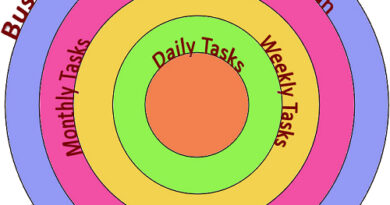Statistics – Measuring What Matters
How do you measure the health of your business?
Profit and income is a great way and to be honest, at the end of the day that really is what matters – if you’ve got more money coming in than going out then you can assume your business is working ok. However there are several other things that you can measure and keep track of that can help you assess the overall health of your business and your marketing and other work that you do.
Keeping track of your statistics is like taking the temperature of your business. When you’ve kept them for awhile you know what is normal for your business. Unexpected increases or drops in visitors or sales can then be seen and the problem uncovered.
If you don’t keep track of your statistics, how then do you know if what you are doing is working or not? If you have no historical records, how do you know if a new marketing tactic has had good results? How do you know if your posts are interesting to readers?
I’m only going to cover some of what I consider most important. There are endless statistics and figures you can track and extrapolate. This can very easily become busy work that you do to avoid the actual work of your business, keep it in moderation and don’t obsess over your figures.
Basic Statistics
Website visitors – how many people are visiting your site on a monthly basis. I know of people who track visitors daily, however unless you have a particular reason for checking that – such as running a sale, promotion, guest post on another blog etc – this starts taking up too much of your time. It’s easy enough to divide the monthly figure into the days in that month to get the average daily visitors.
I do look at my statistics on a weekly basis, although I don’t record them weekly, to see if there are spikes in visitors. Recently I noticed that I had had almost five times my normal daily visitors, it turned out someone had Dugg one of my old posts which caused the spike.
Two great tools for checking website visitors are Statcounter and Google Analytics. If you’re using WordPress on your site then there’s a great plugin called Ultimate Google Analytics that makes it easy to install and use
RSS and Newsletter subscribers – these two should be growing every month. If they’re not, you need to look at your content, consistency of posting, newsletter content and marketing.
Sales – how many sales did you have that month? If your shopping cart has the information, you can break this one down further into repeat customers and new customers.
Products Sold – How many products (or hours if you’re a service business) did you sell that month? This is different to how many sales, as a one sale could be for several products.
Income and Expenditure – Not essential on a monthly basis but extremely useful. Taken in conjunction with the number of sales and products sold it makes it easy to work out averages, such as cost of sale, average sale amount etc, average profit margin. Note that this is a rough figure and will change on a monthly basis – a more accurate figure will take the entire years figures and work from them.
Conversion rates – How many sales divided by the number of website visitors, times 100/1. E.g. 50 sales divided by 2000 visitors times 100 = conversion rate of 2.5%. It can also be a good idea to track the number of sales from direct email promotions, and work out the conversion rates for those as well. This well let you know if your email sales tactics are working or if you need to make changes in the future.
Alexa ranking – this is optional. There’s a lot of debate over whether a site’s Alexa ranking is important or not. I like to track it, however it’s not an essential. If you want to look into this more, see www.alexa.com
Recording your Statistics
Spreadsheets are fantastic for recording statistics. You don’t need to be a whizz at excel or hold a computer degree to make them work. If you can enter numbers, set up a formula and insert a graph (optional) then you know all you need to.
The easiest way to set them up is to have the months along the top and categories (visitors, rss etc) down the right hand side. I run mine from July to June, because that’s the Australian financial year so it works for me to keep it aligned with my bookkeeping.
Click here to download a very simple MS Excel spreadsheet. [download id=”4″]
Feel free to amend it for your own use. I am by no means an Excel expert, so it’s VERY basic.
To use it, first save it to your hard drive. At the end of the month, enter your figures into the rows highlighted in blue, under the appropriate month column. Note that there are formulae in the other rows, your conversion rates will be calculated automatically.
The months are set up for the Australian Financial Year which runs from July to June. If you’re in another country please rename the months according to your own Financial Year.
Data should only be entered into the blue highlighted rows.
Ignore the error messages in rows 11, 19, 28, 30, 32 and 24. The errors are caused because there is not data in the columns for the formula’s to calculate. When you enter data in for that month the error will disappear. (I did say it was basic and I’m no Excel expert – this proves it!)
At the far right hand side of the figures are Year To Date (YTD) figures for Income, Expenditure and Average figures etc. These will change automatically as you enter
Feel free to use this spreadsheet as a starting point for your own statistics. Change it, add to it, take away rows that you don’t use (be very careful of corrupting the formula’s though – take a backup copy first).

Melinda is the founder of SuperWAHM.com and started this site to share her best work from home ideas to help other Work At Home Mums become more financially independent and able to spend time with their families.




